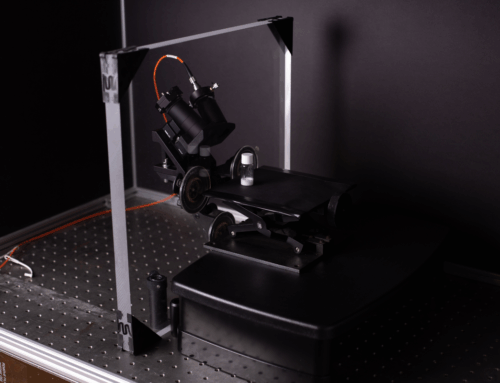Nuclear fusion is one of the significant scientific and engineering challenges of our time. Success promises a future in which clean, virtually limitless energy powers our world. The UK Atomic Energy Authority (UKAEA) is at the forefront of these efforts. Through its Fusion Industry Programme (FIP), it is working to create the infrastructure and technology necessary to realise fusion’s potential as a reliable energy source.
In May 2024, the UKAEA awarded £9.6 million to six organisations, comprising two universities and four private companies, including IS-Instruments, to advance projects that develop tools, technologies, and skills required to accelerate the commercialisation of fusion energy.
The UK closed its last coal-fired power station in September 2024 and must now decarbonise electricity generation before commissioning STEP. Because global power demand will double by 2050, the country must combine multiple energy sources to maintain a stable, sustainable supply. Fusion can provide a valuable, constant source of clean power within that mix.
Much work remains to make nuclear fusion a sustained reality and a commercially viable option. However, its potential cannot be ignored in a society committed to climate change mitigation and net-zero targets. The UK, uniquely positioned as the host of JET, can leverage its leadership in fusion research to become a global hub for fusion energy technology.
Why Pursue Fusion?
There are several points in the justification for the pursuit of fusion, including:
- Fuel Abundance – fuels used in fusion reactions are effectively inexhaustible. Deuterium is readily extracted from seawater, and tritium is produced by irradiating lithium.
- Reliability – fusion does not depend on external factors such as wind/solar
- High Fuel Efficiency: Fusion produces more energy per gram of fuel than any other process on Earth.
- No Chain Reaction – Fusion requires very specific (and high) temperature and pressure conditions to sustain the reaction.
- Shorter-Lived Waste—Fusion waste is significantly less hazardous and has a shorter half-life than the waste produced by fission reactors.
The Challenges
Some key challenges remain in making nuclear fusion a sustainable reality and a scalable solution to the world’s energy crisis. Fusion requires temperatures of over 100 million degrees Celsius (for magnetic confinement) or high pressures of 100-1000 GPa. This raises the issue of attaining and stably maintaining these extreme conditions, the materials that contain them, and monitoring the processes within them.
A further difficulty is around the fuel required for fusion: tritium. A radioactive isotopologue of hydrogen, tritium, is a critical fuel for nuclear fusion. However, naturally occurring tritium is rare, so its production, storage, and management are crucial to the commercial viability of nuclear fusion power plants.
Tritium presents significant challenges for measurement systems. Researchers often need multiple techniques, combining both online and offline measurements to achieve greater accuracy. Many teams use chemical sensors because they are inexpensive and widely available. However, these sensors lack the precision and specificity required for precise tritium analysis. Gas chromatography provides reliable, accurate results but requires large, complex instruments and trained personnel to operate and interpret data. Infrared absorption offers a non-invasive, precise method, but it cannot differentiate diatomic hydrogen (H₂) because it lacks an IR line. Liquid Scintillation Counting achieves a low detection limit but requires large sample masses for effective measurement. Additionally, this method cannot measure H₂ or D₂, requires digestion into liquid form, and produces secondary waste.
The Role of Raman
Raman offers excellent opportunities for qualitative compositional analysis of materials due to its high selectivity.
IS-Instruments is an expert in Raman spectroscopy, specialising in the design and deployment of Raman spectroscopy equipment for on-site materials and chemical analysis. For over 5 years, our flexible modular systems have demonstrated successful operation in challenging measurement environments. Our involvement in the FIP’s GRADE project centres on the fusion fuel cycle, particularly the identification of hydrogen isotopes, with a focus on tritium.
The instrument involved originated from a 2016 collaboration between the Optoelectronic Research Centre (ORC) at the University of Southampton and Amentum. The ORC is a world-leading institute dedicated to photonics research and is the largest in the UK. Fibres invented and produced in Southampton have been sent to the Moon, Mars, and the ISS. Amentum is a global leader in advanced engineering and innovative technology solutions across many sectors, including energy, environment, space, defence, cyber, and more. Together, we conducted a feasibility study funded by Innovate UK to design and construct a prototype benchtop spectrometer capable of analysing gaseous samples. While Raman has been a well-established technique for measuring solids and liquids, the diffuse nature of gases presents significant challenges. This collaboration examined using microstructured hollow-core fibres (HCF) to extend the laser-gas interaction path length. Through a series of Innovate UK-funded projects, the instrument successfully measured N2, O2, and H2O, followed by CH4, IPA, and CO. With GRADE, the instrument is being further developed for analysing tritium gas within the fusion fuel cycle.
The Progression of GRADE
The initial investigatory phase of GRADE concluded with the successful simultaneous analyses of hydrogen, deuterium, and deuterium hydride. The collected data showed repeatable detection across varying concentrations. By comparing and extrapolating data from current literature, the team determined that the existing instrument setup could detect tritium. This finding led directly to the current phase of work.
During the initial phase, ISI collaborated with Amentum to design a complete rig system that safely integrates the instrument into a tritiated environment.
We are currently focusing on confirming gas Raman technology’s capability to analyse and measure tritium in real time. Researchers can also use this technology to monitor tritium during beta decay, when it emits low-energy beta particles that interact with polymers, making them brittle and inflexible. As polymers degrade, beta radiation can generate gaseous byproducts such as methane and small hydrocarbons. This degradation process releases tritiated compounds into the environment.
The beta decay of tritium poses a hazard to the environment, fusion reactor operators, and equipment. Its radioactive nature also dictates the need for a specialised containment area to test each component of new monitoring equipment to ensure its radiation resistance.
Project partner Amentum has constructed a new tritium-specific glovebox to monitor the spectrometer’s ability to detect tritium as a single constituent and in mixtures with H2, D2, and HD. The research will also examine how the HCF behaves in a tritiated environment, building on previous findings that show HCFs possess significantly higher radiation resistance than conventional silica fibres (Medaer et al., 2023).
Jessica Gabb, Project Lead
 Jessica Gabb, ISI project lead for GRADE, said: “We have an ongoing collaboration with Amentum, and this special relationship has proven particularly beneficial when coordinating such a demanding and complex project with such a delicate instrument. We are also working with the Optoelectronic Research Centre at the University of Southampton to explore different filling techniques for the fibre to preserve calibration values and reduce overall analysis time. Ultimately, the goal will be to use robotics to align the laser remotely, making the process safer for human operators.”
Jessica Gabb, ISI project lead for GRADE, said: “We have an ongoing collaboration with Amentum, and this special relationship has proven particularly beneficial when coordinating such a demanding and complex project with such a delicate instrument. We are also working with the Optoelectronic Research Centre at the University of Southampton to explore different filling techniques for the fibre to preserve calibration values and reduce overall analysis time. Ultimately, the goal will be to use robotics to align the laser remotely, making the process safer for human operators.”
What Next?
Amentum is testing the instrument at its specialist facilities. The next step is to determine whether it can reliably and repeatedly detect tritium. The team will complete this stage before the project’s scheduled end date in March 2025.
This project has been supported by UK Atomic Energy Authority through the Fusion Industry Programme. The Fusion Industry Programme is stimulating the growth of the UK fusion ecosystem and preparing it for future global fusion powerplant market. More information about the Fusion Industry Programme can be found online: https://ccfe.ukaea.uk/programmes/fusion-industry-programme/
Reference: Medaer, Sacha ER, Bradley, Thomas D., Di Francesca, Diego., et al. ‘Near IR radiation-induced attenuation in nested anti-resonant nodeless fibres’. Optics Letters, 48-23. 2023.






